Let me tell you, there’s nothing quite like the feeling of opening a spreadsheet and realizing you’ve just spent half your day copy-pasting data from five different websites, two databases, and a PDF that looks like it was scanned in 1998. Been there, done that, and I’m pretty sure I’ve got the carpal tunnel to prove it. As someone who’s spent years in SaaS and automation—first at Jet.com, then Automation Anywhere, and now building —I’ve seen firsthand how the data landscape has exploded. And I mean exploded: over 90% of the world’s data has been generated in just the past two years ().
But here’s the kicker: most of that data is scattered, siloed, and—let’s be honest—completely unstructured. If you’re in sales, operations, or finance, you know the pain. You’re trying to make sense of numbers from your CRM, product reviews from the web, and maybe even a few emails your boss forwarded you at 2 a.m. The right data aggregation software doesn’t just save you time; it unlocks new business opportunities and lets you make decisions at the speed of thought (or at least before your coffee gets cold).
So, whether you’re drowning in data or just tired of being your own data janitor, let’s dive into the best data aggregation tools and software solutions out there—and how to pick the one that’ll actually make your life easier.
Why Data Aggregation Tools Matter for Modern Businesses
Let’s start with the basics: what is data aggregation software, and why does it matter so much today?
The short answer: it’s the glue that holds your business intelligence together. Modern organizations are dealing with a wild mix of data sources—websites, APIs, databases, spreadsheets, cloud apps, you name it. And the numbers are staggering: 80% of organizations store more than half their data in multi-cloud or hybrid environments (). That means your sales leads might live in a CRM, your product info in an Excel file, and your competitor pricing on a website that changes every hour.
Data aggregation tools step in to automatically pull all this information together, giving you a unified view—no more hunting through ten tabs or asking Bob from IT to run a SQL query. For business users, this is a game-changer (oops, I promised not to say that… let’s call it a “workflow lifesaver” instead). Studies show that using data aggregation can boost decision-making speed by up to 5× and improve operational efficiency by about 30% ().
And it’s not just about speed. Aggregated data helps you:
- Spot trends and anomalies you’d otherwise miss.
- Reduce manual errors (goodbye, fat-fingered copy-paste mistakes).
- Break down silos between teams and systems.
- Empower everyone—from sales reps to CFOs—to make data-driven decisions.
In fact, data-driven organizations see an average 8%+ increase in revenue and 10% cost reductions (). Not bad for something that started as a way to avoid spreadsheet headaches.
How to Choose the Right Data Aggregation Software
With so many tools out there, how do you pick the right one? I’ve been asked this question more times than I can count (usually right after someone’s Excel crashes for the third time in a day).
Here’s my playbook:
1. Know Your Data Sources
First, make a list: Are you pulling from websites, databases, APIs, spreadsheets, or all of the above? Some tools shine at web scraping (think Thunderbit, Import.io), while others are built for structured data pipelines (like Fivetran, Hevo Data, Talend).
2. Match the Tool to Your Team
Who’s going to use it? If you want your sales or ops team to run their own reports, look for no-code or low-code interfaces. If you’ve got a data engineering squad, maybe you want something with more power and customization.
3. Integration & Output Options
Can the tool export to your favorite destinations—Excel, Google Sheets, Notion, or your data warehouse? Does it support scheduling for real-time or recurring updates? For finance teams, financial data aggregation software that connects to accounting systems or banking APIs might be a must.
4. Scalability & Performance
Will it handle your data volumes as you grow? Cloud-based tools usually scale better, but check for limits on rows, pages, or concurrent jobs.
5. Data Transformation & Quality
Some tools just collect data; others clean, deduplicate, and transform it on the fly. If you need to join tables, compute new fields, or validate data, look for ETL/ELT features.
6. Security & Compliance
If you’re dealing with sensitive data (customer info, financials), make sure the tool supports encryption, access controls, and compliance standards like GDPR or HIPAA.
7. Pricing Model
Some tools charge per row, per page, or by subscription. Take advantage of free tiers or trials to test before you commit. And remember: the cheapest tool isn’t always the best value if it saves you hours every week.
Structured vs. Unstructured Data Aggregation: What’s the Difference?
Here’s where things get interesting—and where most businesses hit a wall.
Structured Data
Think databases, spreadsheets, APIs—anything with neat rows and columns. Tools like Fivetran, Hevo Data, and Talend are built for this world. They connect to your systems, map fields, and keep everything in sync.
Unstructured Data
This is the wild west: web pages, PDFs, images, emails, social media posts. 80–90% of digital data is unstructured (), and it’s growing 55–65% per year (). The problem? Traditional ETL tools can’t handle it. Extracting product reviews from a website or text from a PDF usually means manual work or custom scripts.
Thunderbit was born out of this frustration. We built it to handle the messy, unstructured stuff—so business users can turn web pages, images, and even PDFs into structured tables with just a couple of clicks. No code, no drama, just data.
And let’s be real: most “data aggregation needs” in the real world aren’t coming from databases—they’re coming from Google Maps, online directories, or e-commerce sites with no API in sight. That’s where AI-powered tools like Thunderbit fill the gap.
The 10 Best Data Aggregation Tools & Software Solutions
Alright, let’s get to the good stuff. Here’s my curated list of the top data aggregation software out there, covering everything from web scraping to ETL to all-in-one BI platforms. I’ve evaluated them based on ease of use, data source coverage, business user friendliness, pricing, and unique features.
- for AI-powered, no-code web and unstructured data aggregation
- for visual, no-code web data extraction
- for sales engagement and email data aggregation
- for flexible web automation and scraping
- for enterprise-grade, large-scale web data aggregation
- for real-time, no-code ETL pipelines
- for advanced ETL, data quality, and governance
- for automated, reliable data connectors
- for collaborative DataOps and end-to-end workflows
- for all-in-one BI and instant dashboarding
1. Thunderbit: The AI-Powered Data Aggregator for Web & Unstructured Data
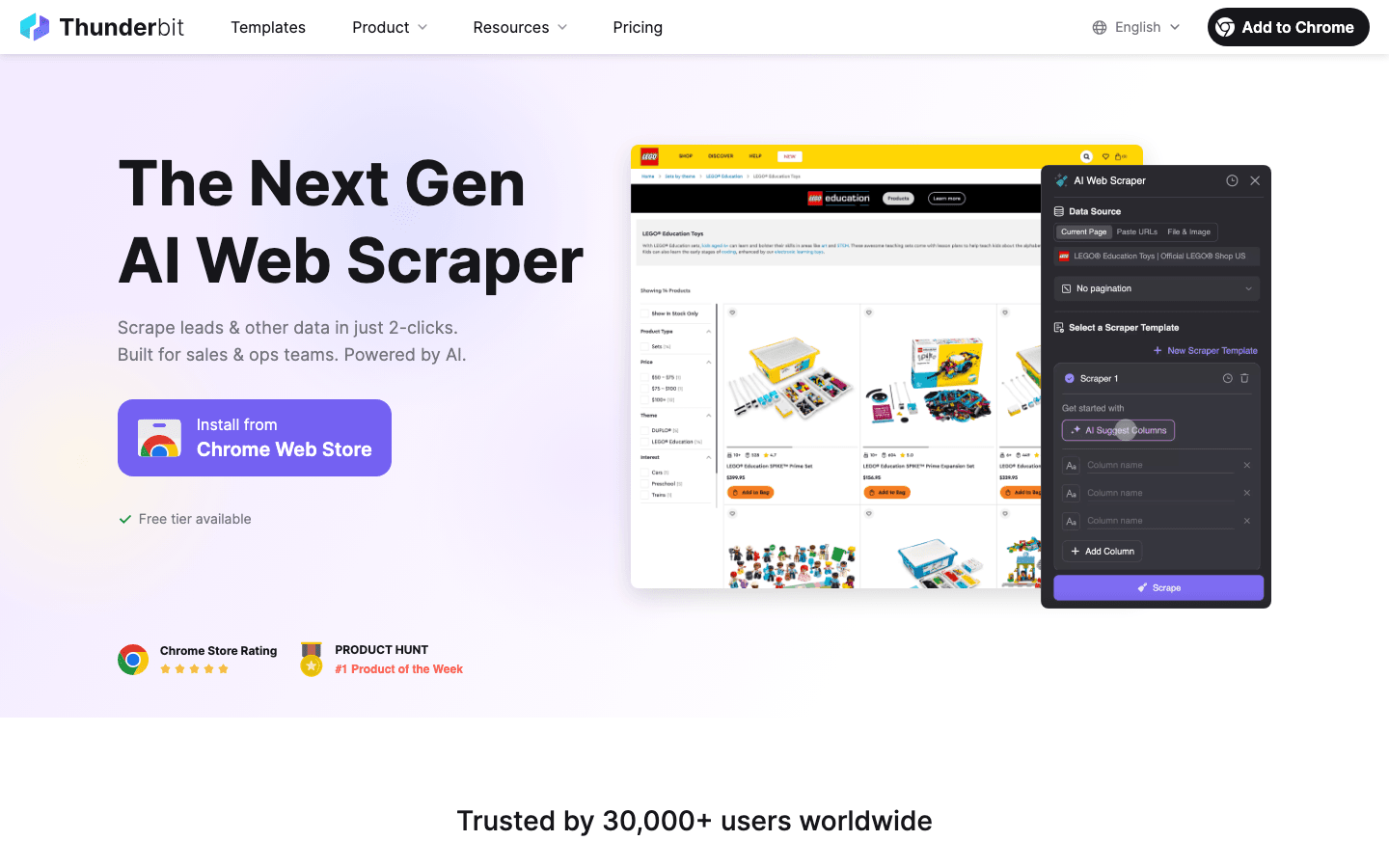
I’ll admit, I’m a little biased here—but for good reason. is designed for non-technical business users who need to aggregate data from websites, directories, and online platforms. It’s your “web data intern,” always ready to scrape leads, monitor competitors, or extract contact info—without writing a single line of code.
Key Features:
- AI Suggest Fields: Let AI read the page and propose what to scrape (names, prices, emails, etc.).
- Subpage & Pagination Scraping: Automatically follow links and handle multi-page lists.
- Instant Export: Send data to Excel, Google Sheets, Notion, or Airtable in seconds.
- Unstructured Data Support: Scrape text from PDFs, images, and more.
- Pre-built Templates: One-click scrapers for Amazon, Zillow, Instagram, Shopify, and more.
- Free Data Export: Download as CSV/JSON or export to your favorite tools—no extra charge.
- AI Autofill: Use AI to fill out online forms (completely free).
- Scheduled Scraper: Automate recurring data collection with natural language scheduling.
Use Cases:
- Sales Lead Generation: Scrape business directories, contact info, or LinkedIn public profiles.
- Competitor Monitoring: Track prices, stock, and reviews on e-commerce sites.
- Contact Extraction: Grab emails, phone numbers, and images from any web page.
- Market Research: Aggregate event lists, product catalogs, or public filings.
Thunderbit fills the gap left by traditional ETL and financial data aggregation software—it’s built for the messy, unstructured web, not just neat databases. And with a free tier (6 pages, or 10 with a trial), it’s easy to try before you buy. Paid plans start at $15/month for 500 credits (rows), and exporting is always free. If you want to see it in action, check out the or browse more use cases on the .
2. Import.io
is a pioneer in no-code web data extraction. Its point-and-click interface lets you turn any website into structured data—no coding required. Great for teams that need quick, scalable web data extraction.
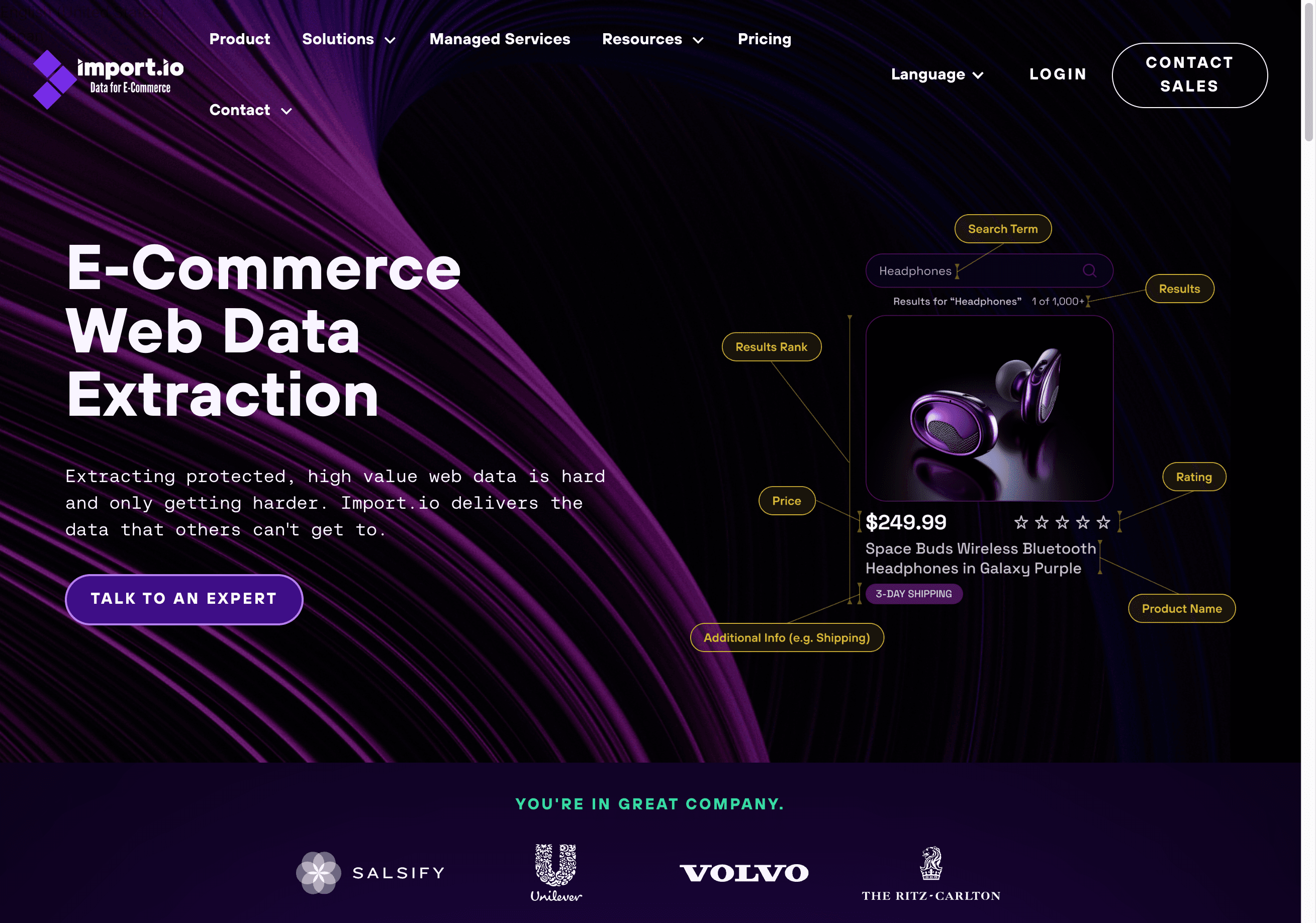
Key Features:
- Visual extractor builder (just click what you want to scrape)
- Handles sites behind logins and basic anti-scraping
- Cloud-based, scalable to thousands of URLs
- Scheduling and API integration for automated workflows
Best For: Market research, price monitoring, or any team needing large-scale web data without developer support. Pricing is custom/enterprise, but there’s a 14-day free trial.
3. Yesware
is a sales engagement platform built directly into Gmail and Outlook, enabling sales teams to track emails, schedule meetings, automate follow-ups, and access performance insights without switching tools.
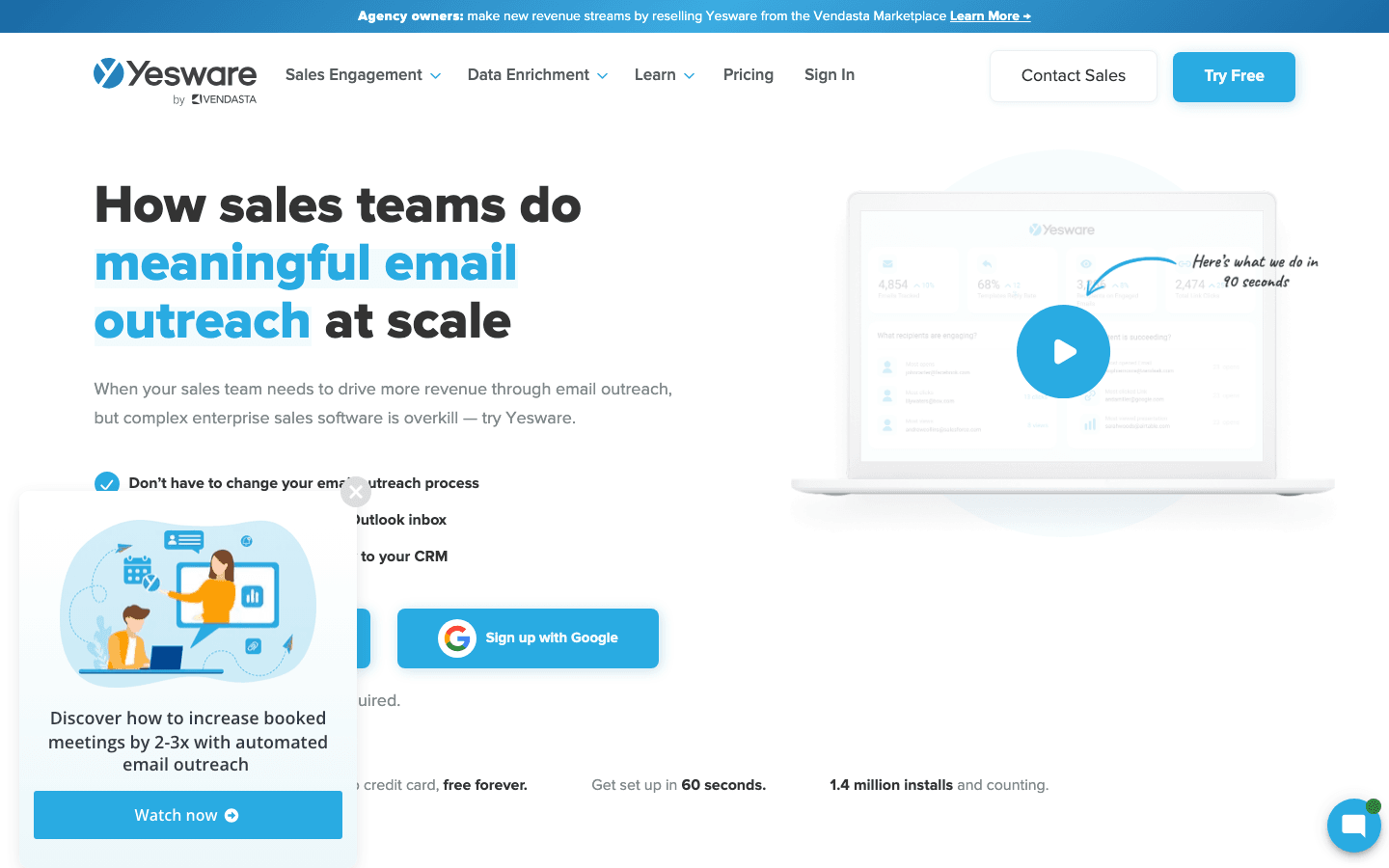
Features:
- Email tracking with real-time open and click notifications
- Meeting scheduler integrated with your calendar
- Multi-touch campaigns with personalized email automation
- Templates and reporting for team-wide messaging consistency
- Salesforce integration for seamless data syncing
- Attachment tracking and presentation analytics
Ideal For: Sales reps and account executives looking to streamline outbound outreach, follow-ups, and deal tracking within their inbox. Starts at $19/month per user, with advanced features on higher tiers.
4. Apify
is the “Swiss army knife” of web automation and scraping. It’s flexible—great for developers and tech-savvy teams—but also offers a huge marketplace of ready-made “Actors” (pre-built scripts) for non-coders.
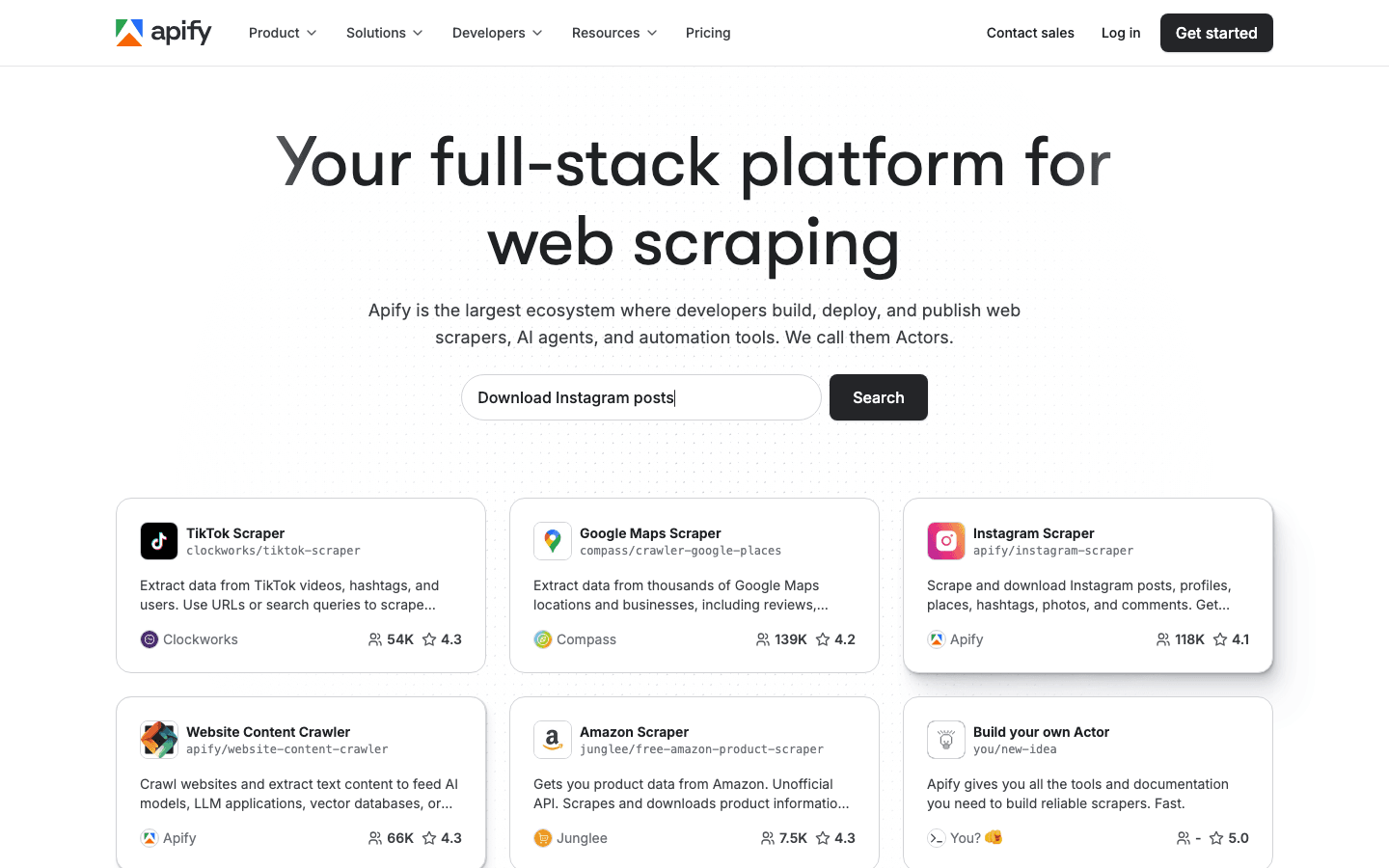
Features:
- 5,000+ ready-made scraping and RPA Actors
- Headless browser automation, scheduling, and parallel execution
- Open-source SDK for custom crawlers (JavaScript/Python)
- Pay-as-you-go pricing with a free tier
Suitable For: Teams with mixed technical skills or custom workflow needs. If you want to automate anything on the web, Apify can probably do it.
5. Mozenda
is an enterprise-grade web data aggregation platform with a point-and-click interface. It’s been around since 2007 and is trusted by big brands for large-scale, reliable web scraping.
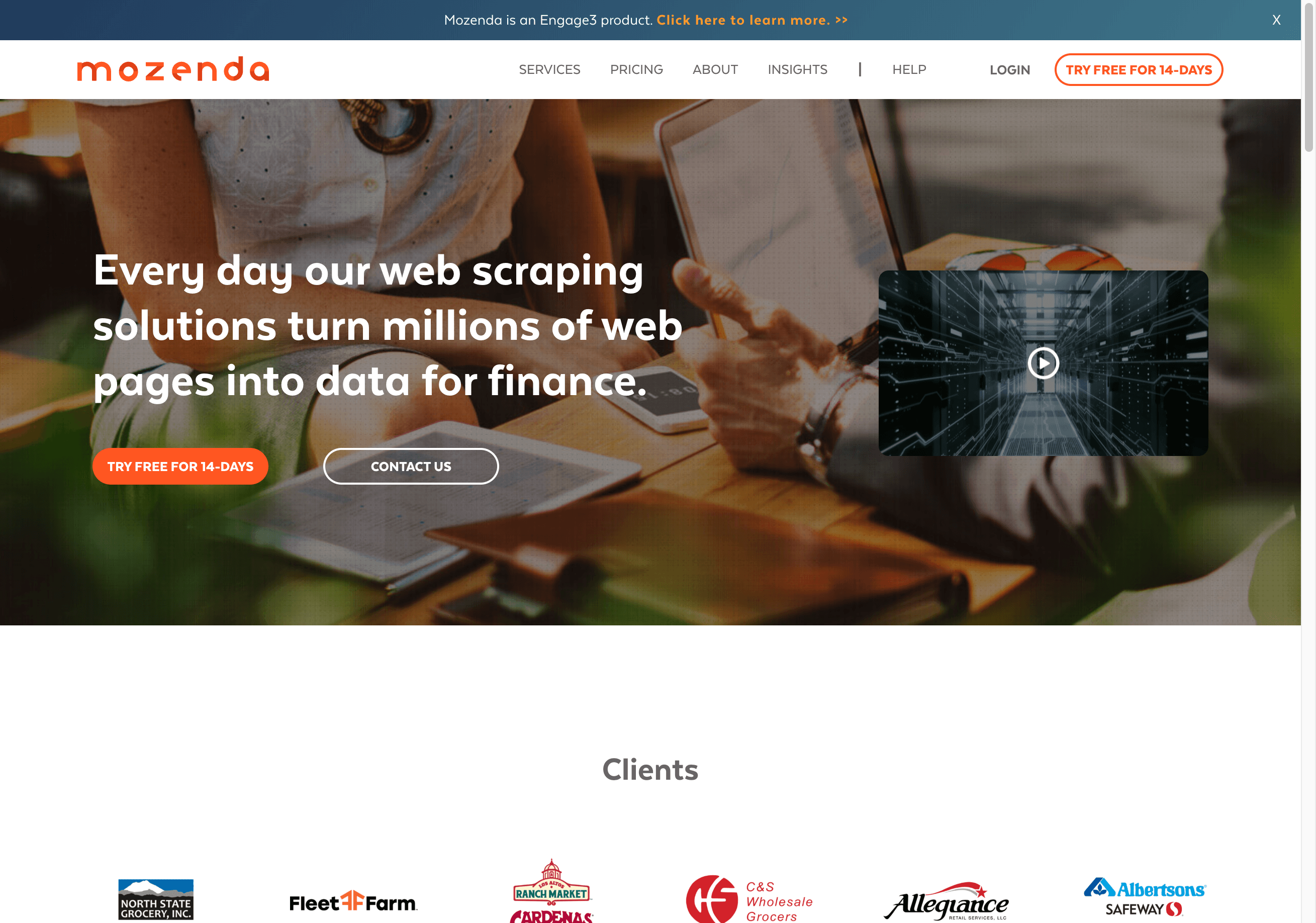
Features:
- Visual agent builder (no scripting required)
- Cloud-based, scalable extraction
- Downloads files/images/PDFs as part of workflow
- Data cleaning, deduplication, and organizing tools
- Managed service option (Mozenda builds and runs scrapers for you)
Best For: Enterprises needing dependable, large-scale web data aggregation (price intelligence, product catalogs, research). Pricing is on the higher side (Pro ~$250/mo, Enterprise ~$450+/mo), but you get robust support.
6. Hevo Data
is a cloud-based ETL platform focused on real-time data pipelines for structured sources. It’s truly no-code and automates the heavy lifting of syncing data from databases, SaaS apps, and cloud storage.

Features:
- 150+ pre-built connectors (databases, SaaS, cloud storage)
- Real-time change data capture (CDC)
- Auto schema mapping and evolution
- 24/7 support and monitoring
Ideal For: Businesses centralizing data from SaaS, databases, and cloud apps into a data warehouse for analytics. Free tier (1M events/month); paid plans start at ~$239/month.
7. Talend
is a heavyweight in the ETL and data integration world, offering both open-source and enterprise versions. It’s known for its comprehensive features, data quality tools, and strong governance.
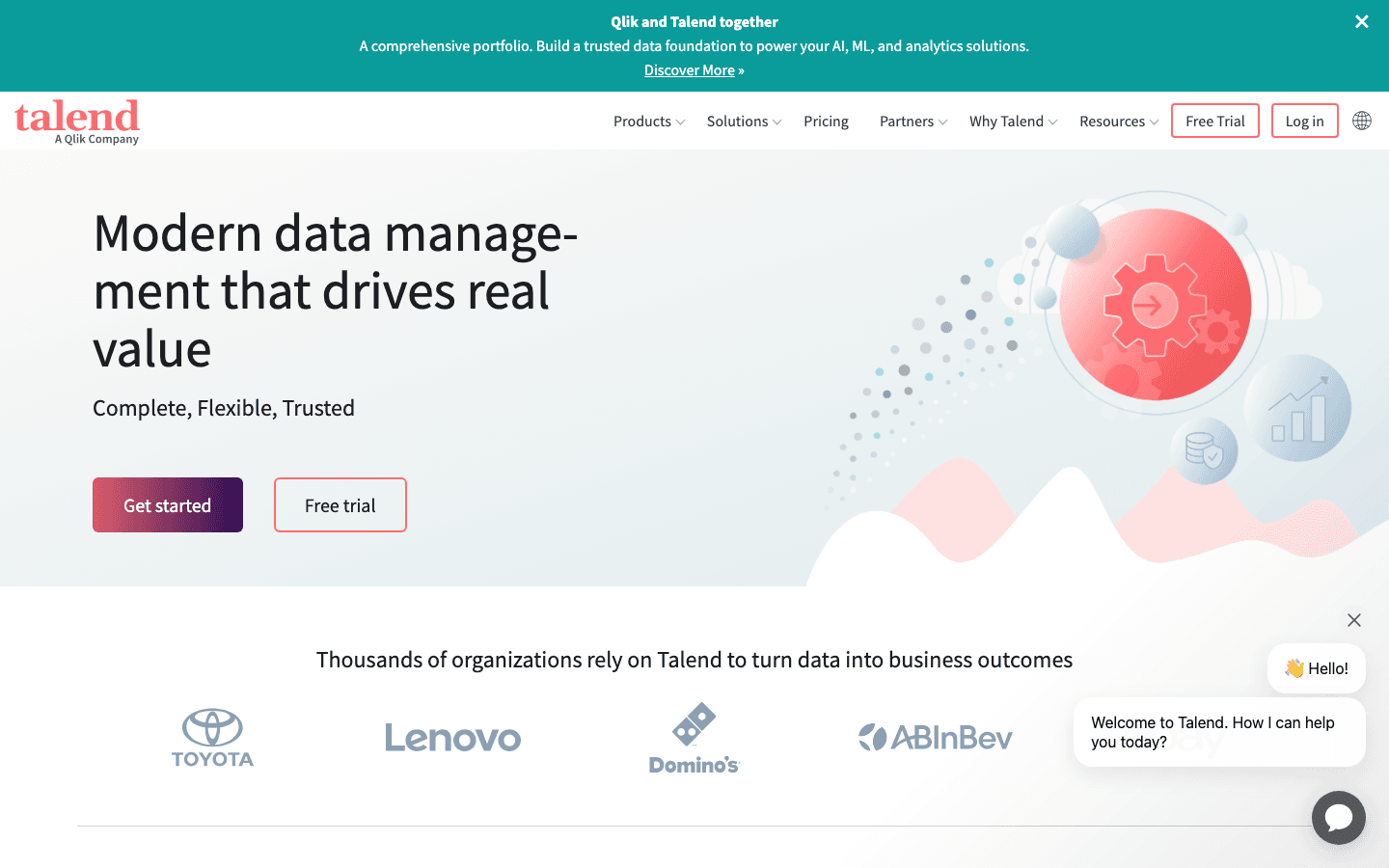
Features:
- Hundreds of connectors (databases, files, APIs, legacy systems)
- Advanced data transformation and quality (deduplication, validation)
- Data governance, lineage, and metadata management
- On-premise, cloud, and hybrid deployment options
Best For: Organizations with complex data environments and compliance needs. Open Studio is free; enterprise pricing is custom (license-based).
8. Fivetran
is the gold standard for automated data connectors. It’s fully managed—just connect your sources and destination, and Fivetran keeps everything in sync with zero maintenance.
Features:
- 500+ pre-built connectors (SaaS, databases, event streams)
- Auto schema handling and incremental syncs
- 99.9% uptime SLA
- Usage-based pricing (Monthly Active Rows); 14-day free trial
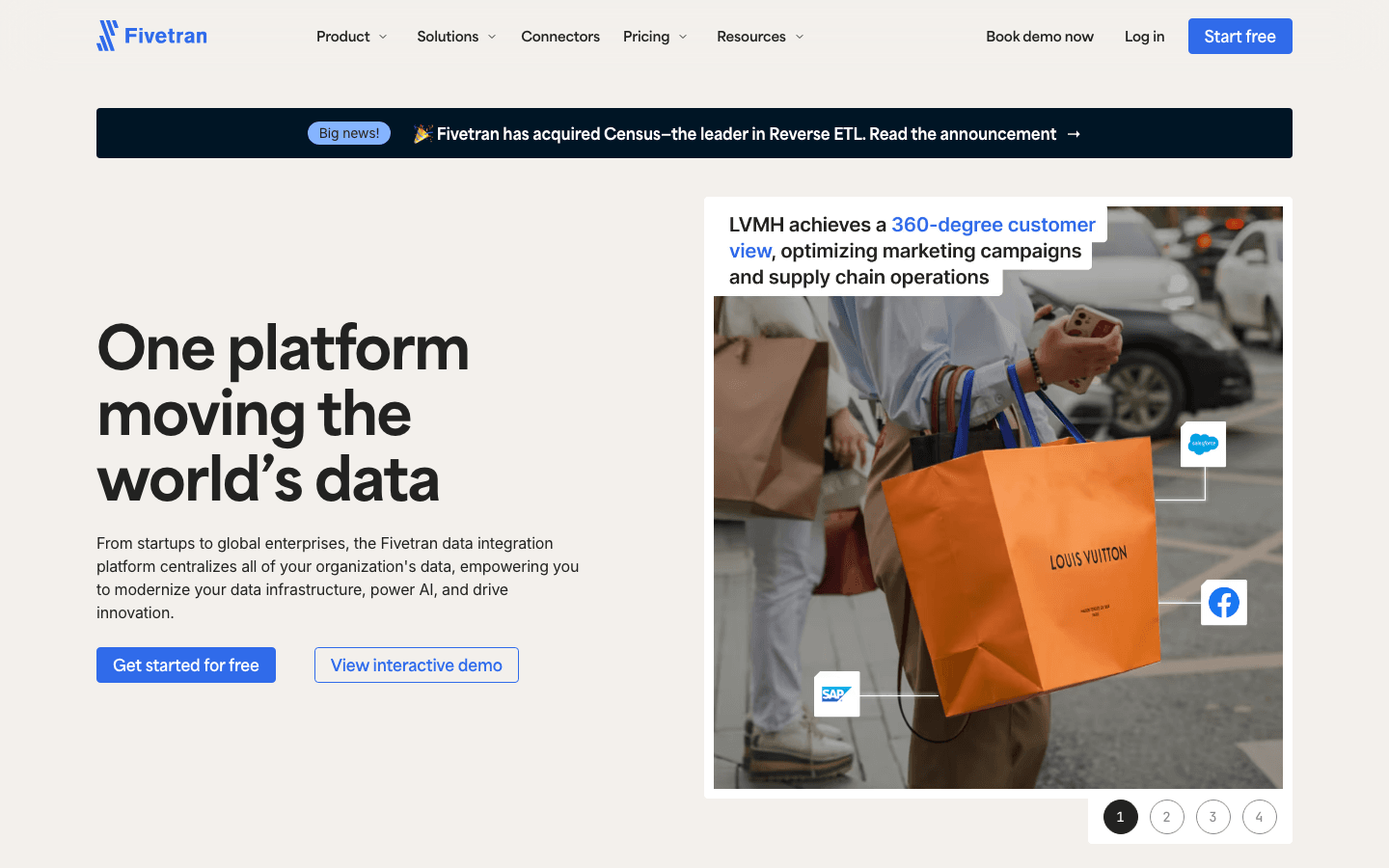
Ideal For: Analytics teams needing reliable, ongoing data sync into a cloud warehouse. Great for companies that want to focus on analysis, not pipeline maintenance.
9. Keboola
is a cloud-based DataOps platform that brings extraction, transformation, orchestration, and collaboration together. It’s all about making data workflows production-ready from day one.
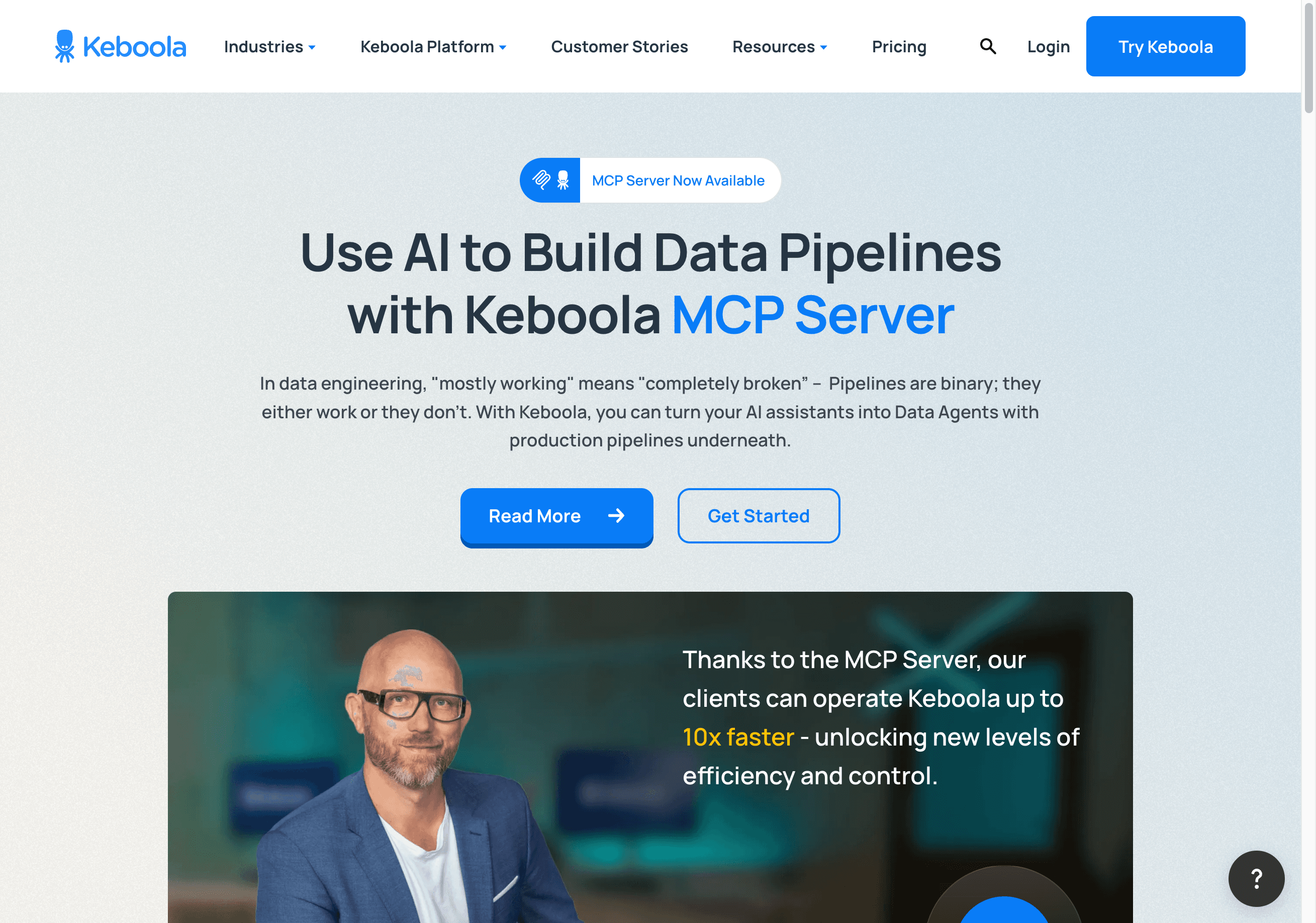
Features:
- 250+ connectors (“Extractors”) for databases, APIs, cloud apps
- Built-in data storage (Snowflake, Redshift, etc.)
- Transformations in SQL, Python, R, or dbt
- Visual flow builder for orchestration
- Collaboration, versioning, and governance
Best For: Teams needing end-to-end data aggregation and transformation, especially if you want multiple team members (engineers, analysts, scientists) working together. Free tier available; paid plans scale with usage.
10. Domo
is an all-in-one BI platform that aggregates data from everywhere and turns it into real-time dashboards. It’s designed for business users who want instant insights without wrangling separate ETL and BI tools.
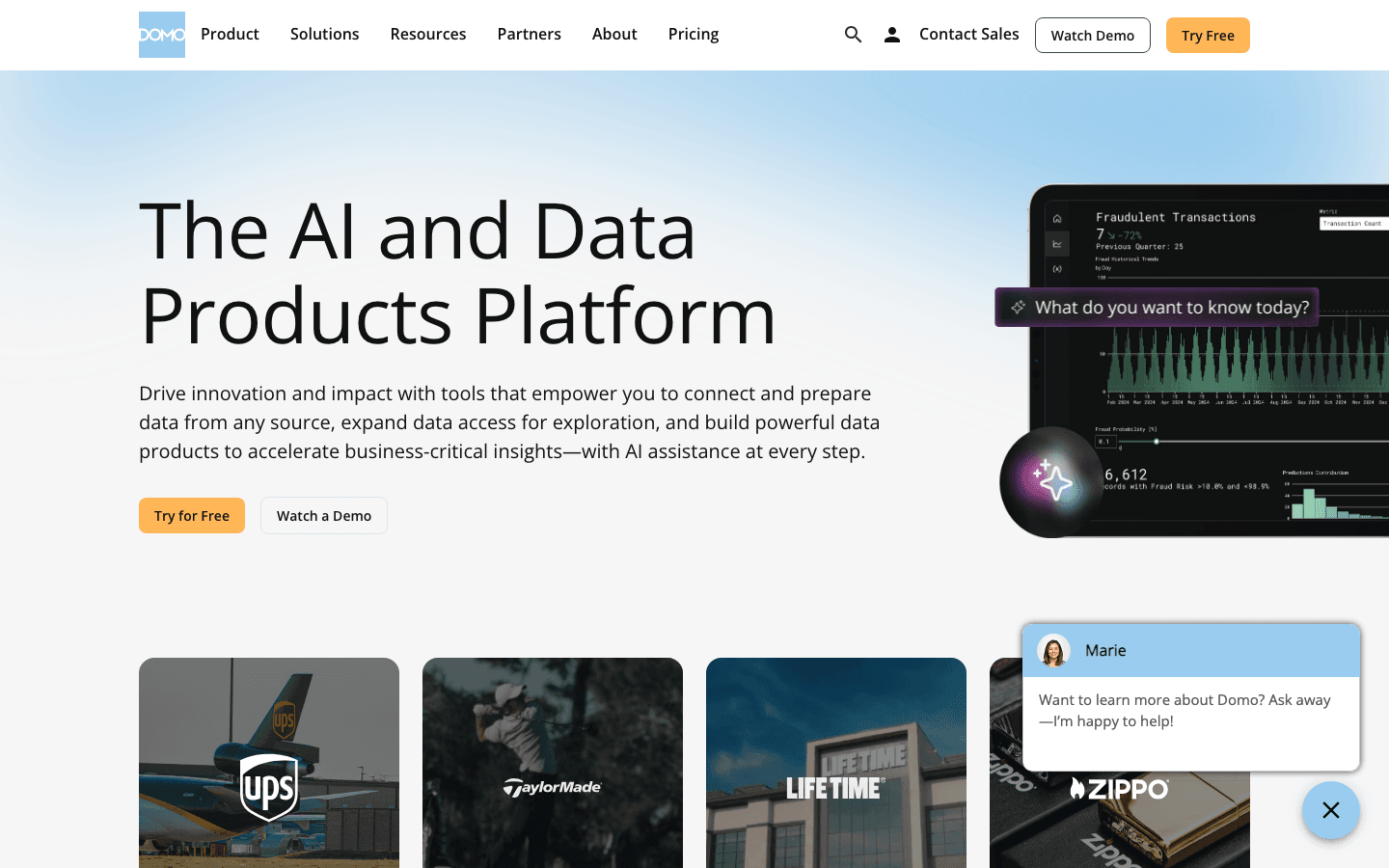
Features:
- 1,000+ data connectors (SaaS, databases, spreadsheets)
- Magic ETL visual data flows (no code needed)
- 150+ chart types and interactive dashboards
- Real-time updates, mobile access, and collaboration
Ideal For: Operations and executive teams needing instant data insights and dashboards. Pricing is subscription-based (users + data volume); free trials and departmental pricing available.
Which Data Aggregation Tool Is Right for Your Business?
Let’s break it down by scenario:
-
Web & Unstructured Data:
Need to scrape websites, extract info from PDFs, or grab images? Thunderbit is your best bet for non-technical users—just two clicks and you’re done. For more complex automations or developer-heavy teams, Apify offers maximum flexibility.
-
Structured Data Integration:
Pulling data from databases, SaaS apps, or cloud storage into a warehouse? Fivetran is the go-to for hands-off, automated sync. Hevo Data is a great alternative if you want a more budget-friendly, no-code solution.
-
End-to-End BI for Non-Tech Teams:
Want dashboards and data aggregation in one? Domo is built for business users who need instant insights and don’t want to manage separate tools.
-
Enterprise or On-Premise Needs:
If you need deep customization, on-premise deployment, or strict compliance, Talend is your friend (just be ready for a steeper learning curve).
-
Team Collaboration & DataOps:
For teams who want to build, transform, and orchestrate data flows together, Keboola is a fantastic all-in-one platform.
-
Large-Scale, Managed Web Scraping:
Mozenda is ideal for enterprises that need reliable, large-scale web data extraction and are willing to invest in robust support.
-
Financial Data Aggregation:
If you’re aggregating internal financial systems (QuickBooks, NetSuite, etc.), Hevo Data or Fivetran can help. For external bank feeds, you might need a specialized tool like Plaid (not covered here).
Pro tip: Most of these tools offer free trials or free tiers. Test them out with your real data and see which fits your workflow best.
Final Thoughts: Unlocking Business Value with Data Aggregation Software
If you’ve made it this far, you’re probably serious about getting your data house in order. And honestly, that’s half the battle. The right data aggregation tool can turn “too much data” into “just the right insight”—and free you up to focus on what actually matters.
Here’s what I’ve learned (sometimes the hard way):
- Start with a clear use case. Don’t try to boil the ocean—pick one high-impact workflow and automate it.
- Leverage free trials. Vendors want you to succeed, and they’ll often help you get set up.
- Mix and match if needed. It’s okay to use a web scraper alongside an ETL tool and a BI dashboard—just make sure your data flows smoothly end-to-end.
- Prioritize data quality. Garbage in, garbage out. Use validation, scheduling, and documentation to keep your data clean.
- Get your end-users involved. The best tools are the ones your team actually uses.
Remember, modern data aggregation software is a force multiplier for your business. Companies using integrated analytics see higher retention, faster decision cycles, and real revenue gains (). And with automation, you can finally stop being a data janitor and start being a data strategist.
So go ahead—pick a tool, automate that tedious data task, and see what you can accomplish when your data is finally working for you (instead of the other way around). And if you want to see how AI can make web data aggregation actually fun (yes, really), give a try. Your carpal tunnel will thank you.
Curious for more?
Check out the for deep dives on scraping Amazon, Google Search, PDFs, and more. Or swing by our for walkthroughs and tips.
Happy aggregating—and may your spreadsheets always be up to date.
FAQs
1. What is data aggregation software and why is it important for businesses today?
Data aggregation software automatically collects and combines data from multiple sources—such as websites, databases, APIs, spreadsheets, and cloud apps—into a unified view. This is crucial for modern businesses because most data is scattered and unstructured, making manual collection time-consuming and error-prone. Aggregation tools streamline workflows, reduce manual errors, break down data silos, and empower teams to make faster, data-driven decisions.
2. How do I choose the right data aggregation tool for my business needs?
To select the right tool, consider the following factors:
- Identify your data sources (websites, databases, APIs, etc.).
- Match the tool’s interface to your team’s technical skills (no-code, low-code, or developer-focused).
- Check integration and export options for your preferred destinations.
- Assess scalability and performance for your data volume.
- Look for data transformation and quality features if needed.
- Ensure security and compliance for sensitive data.
- Compare pricing models and take advantage of free trials.
3. What’s the difference between structured and unstructured data aggregation?
Structured data refers to organized formats like databases, spreadsheets, and APIs, which are easily handled by traditional ETL tools (e.g., Fivetran, Hevo Data, Talend). Unstructured data includes web pages, PDFs, images, emails, and social media posts, which are more challenging to aggregate. Specialized tools like Thunderbit are designed to extract and structure this messy, unstructured data for business use.
4. Which data aggregation tools are best for non-technical users?
For non-technical users, tools with no-code or visual interfaces are ideal. Thunderbit and offer user-friendly experiences for web data extraction without requiring programming skills. Domo is also suitable for business users who want to aggregate and visualize data in real-time dashboards.
5. Can I use multiple data aggregation tools together, and is it recommended?
Yes, it’s common and often recommended to mix and match tools to fit your workflow. For example, you might use a web scraper like Thunderbit for unstructured web data, an ETL tool like Fivetran for structured database integration, and a BI platform like Domo for visualization. The key is to ensure smooth data flow between tools and maintain data quality throughout the process.